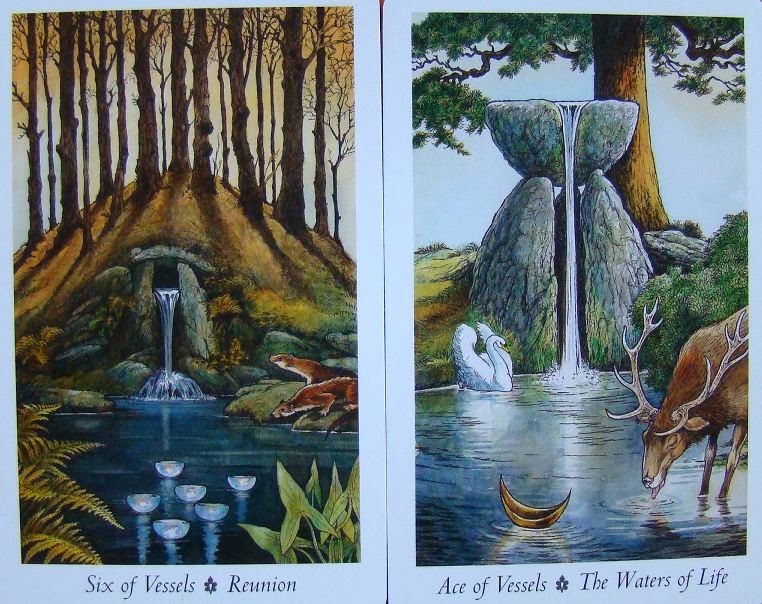"She is the darkness to your light, the hatred to your love."
-Merlin-
Morgana is the daughter of Igraine and Gorlois of Cornwall, and half sister to Arthur. She is sent to a monastery, to become a nun. It is here that legend says Morgana learned the magical arts, rather than that of Christianity. This forever links Morgana to Avalon, as does her name, which means sea. Morgana becomes the link between this life, and the next. In the Arthurian Legends, it is Morgana that takes Arthur to Avalon. Whether she is at odds with Arthur, or the one bringing prosperity to his kingdom, her magical power is steadfast. Morgana is a powerful High Priestess in the Arthurian world, and the legends speak volumes to show her cleverness and devotion to her magic.
In some tales, Morgana is set completely again her brother Arthur. Whether she is caught with one of Arthur's knights by Guinevere, or gives birth to Mordred, the conflict is ever present. In some cases, the challenges presented to Arthur and his Knights only brings prosperity in the end. Part of this overwhelming complex mix of good and bad, no doubt has to do with the Morrigan. Morgana has always been a representation of this Triple Goddess. Whenever Morgana is seen with a raven or crow, this is a good indication of the Goddess aspect. In the Arthurian Legends though, it can be as simple as a name alteration or added title. Apparently, names really do mean something, even back then.
I've spent quite a few posts dedicated to the different aspects of the Morrigan already, but to understand Morgana it's important. The Morrigan is a War Goddess, and brings about war, death, and destruction. While these forces might seem evil or negative, they are also sacred and meaningful. For many, the Morrigan is the representation of the next stage in our existence. Certain aspects of the Morrigan bring comfort to those affected by death. It is important to remember when dealing with the Morrigan that there is a sense of mystery, as it is the nature of the Morrigan. Many fear the Morrigan, but others embrace this Goddess. Within the Arthurian Legends, is a way to deeper understand the Morrigan.
For myself, Morgana is one of the most important figures of the Arthurian Legends. It was the Morrigan that first lead my initial curiosity about Celtic Traditions. The name that I have chosen for myself in magic communities is Morgaine. There is a deep sense of my life being shaped by the Morrigan, and with it then Morgana. As I study more and more of Arthurian characters, none seem to shape women more than Morgana. She's often depicted as dark, mysterious, and overwhelmingly powerful. There could be no greater representation of the Dark Goddess than that, at least not in today's society. To study and talk of Morgana, is almost like that of coming home.
In practice today, Morgana is a source of great mystery. She is not easily understood, but her information is vast. With her presence, comes the transformation that awaits us all. We become shaped by what we do not know, as much as we are shaped by what we do. The raven, the crow, the dark moon, and the night are all a sense of the Morrigan. Through Morgana we come to understand Avalon, or the Other World that awaits us. She is an embodiment of wisdom, power, and cunning, traits that can suit anyone well. In the deepest connection to Morgana, we get a sense of her earlier self. We pour ourselves into the books of ancient wisdom, and learn what we can. We shape our own paths, and our destiny at the end of it.



.JPG)

.JPG)
.JPG)
.JPG)

.JPG)





